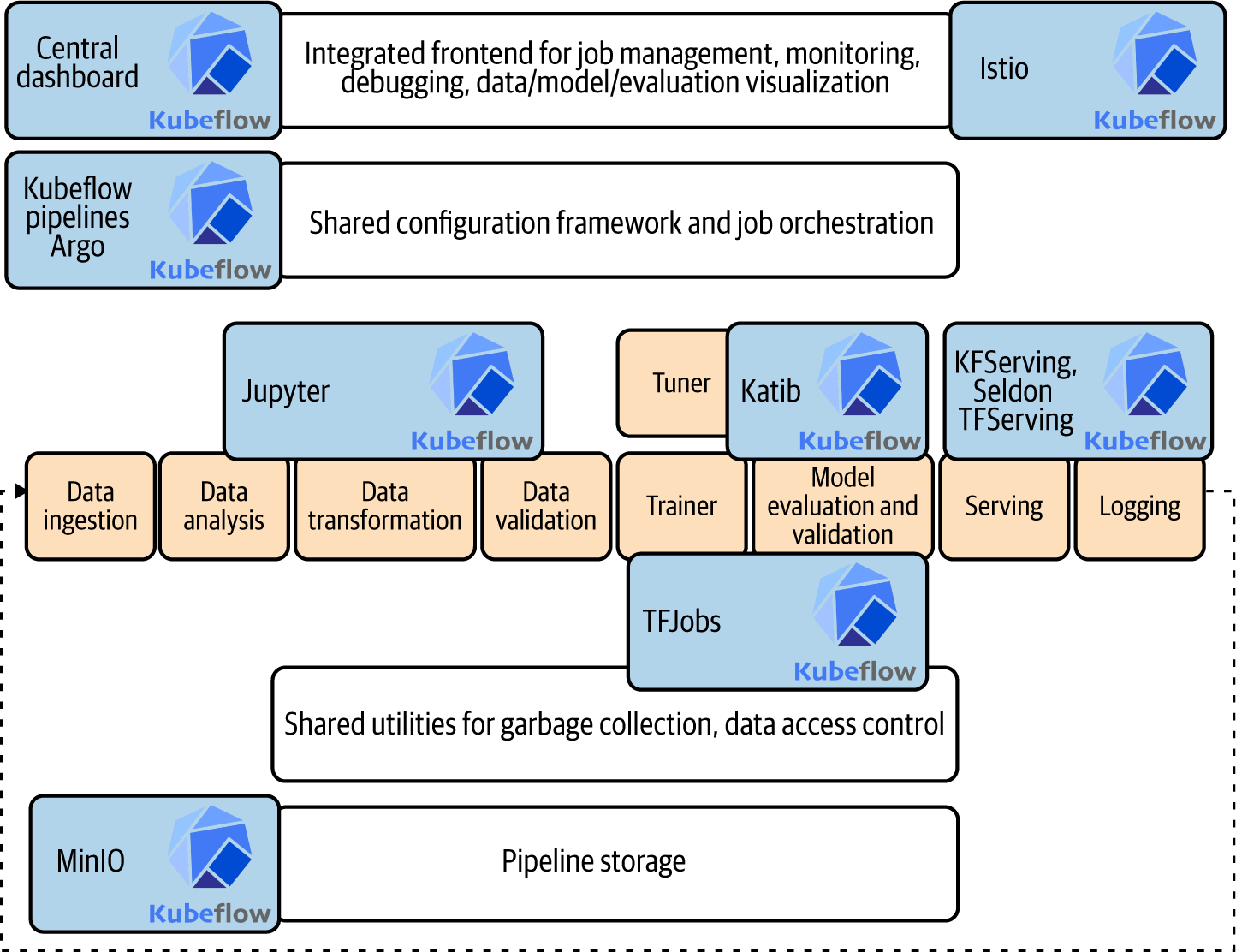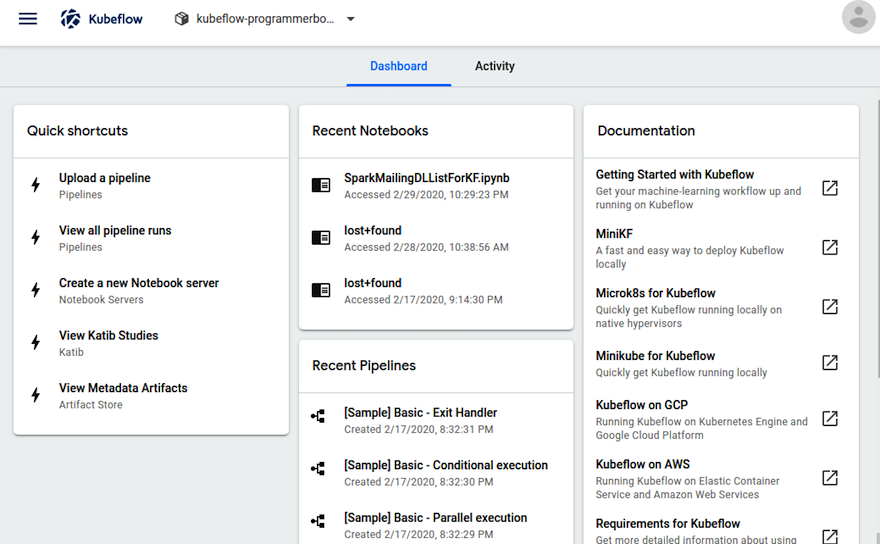Chapter 3. Kubeflow Design: Beyond the Basics
You made it through two chapters. Well done. So far you have decided to learn Kubeflow and worked through a simple example. Now we want to take a step back and look at each component in detail. Figure 3-1 shows the main Kubeflow components and the role they play in the overall architecture.

Figure 3-1. Kubeflow architecture
Essentially, we’ll look at the core elements that make up our example deployment as well as the supporting pieces. In the chapters that follow, we will dig into each of these sections in greater depth.
That said, let’s get started.
Getting Around the Central Dashboard
Your main interface to Kubeflow is the central dashboard (see Figure 3-2), which allows you to access the majority of Kubeflow components. Depending on your Kubernetes provider, it might take up to half an hour to have your ingress become available.

Figure 3-2. The central dashboard
Note
While it is meant to be automatic, if you don’t have a namespace created for your work, follow Kubeflow’s “Manual profile creation” instructions.
From the home page of the central dashboard you can access Kubeflow’s Pipelines, Notebooks, Katib (hyperparameter tuning), and the artifact store. We will cover the design of these components and how to use them next. ...
Get Kubeflow for Machine Learning now with the O’Reilly learning platform.
O’Reilly members experience books, live events, courses curated by job role, and more from O’Reilly and nearly 200 top publishers.

